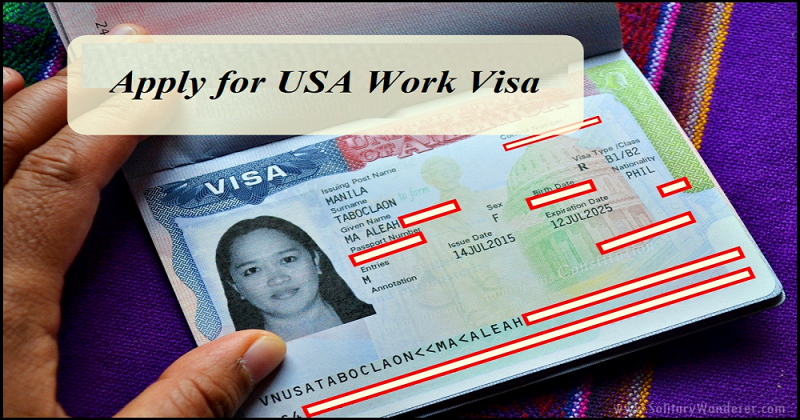Embarking on a career journey in the United States offers a wealth of professional growth and cultural enrichment. Navigating the complexities of U.S. immigration laws and employment practices can be challenging, but with informed strategies and careful planning, securing a U.S. work visa and employment is an achievable goal.
Understanding U.S. Work Visas
The United States offers a variety of work visas, each designed to accommodate different employment scenarios and qualifications. These visas are primarily categorized into two types:
Nonimmigrant (Temporary) Work Visas
Nonimmigrant visas are intended for individuals seeking to work in the U.S. for a specific period. Common categories include:
-
H-1B Visa: For professionals in specialty occupations requiring at least a bachelor’s degree or its equivalent.
-
H-2A Visa: For temporary agricultural workers.Global Scholarships
-
H-2B Visa: For temporary non-agricultural workers in sectors such as hospitality and construction.
-
L-1 Visa: For intracompany transferees in managerial or specialized knowledge positions.
-
O-1 Visa: For individuals demonstrating extraordinary ability in fields like arts, sciences, education, business, or athletics.
Most nonimmigrant work visas require employer sponsorship, where a U.S. employer files a petition with the U.S. Citizenship and Immigration Services (USCIS) on behalf of the employee.
Immigrant (Permanent) Work Visas
Immigrant visas, also known as employment-based green cards, allow individuals to live and work permanently in the U.S. Categories include:
-
EB-1: For individuals with extraordinary abilities, outstanding professors or researchers, and multinational executives or managers.
-
EB-2: For professionals with advanced degrees or exceptional abilities.
-
EB-3: For skilled workers, professionals, and other workers.
-
EB-4: For special immigrants, including religious workers and certain other classes.
-
EB-5: For investors who invest a significant amount of capital in a U.S. business that will employ American workers.
Securing an immigrant visa typically requires a permanent job offer and an approved labor certification from the Department of Labor.
Steps to Apply for a U.S. Work Visa
-
Determine the Appropriate Visa Category: Assess your qualifications and employment objectives to identify the most suitable visa.Washington Post Jobs
-
Secure a Job Offer: Obtain a formal job offer from a U.S. employer willing to sponsor your visa application.
-
Employer Files a Petition: Your employer submits a petition to USCIS on your behalf.
-
Complete the Visa Application: Once the petition is approved, complete the DS-160 form and schedule a visa interview at a U.S. embassy or consulate.
-
Attend the Interview: Provide all necessary documentation and be prepared to discuss your qualifications and intentions.
-
Visa Approval and Entry: Upon approval, you can enter the U.S. and commence employment.
Strategies to Secure Employment and Visa Sponsorship
Finding a job in the U.S. that offers visa sponsorship requires a proactive and strategic approach. Consider the following strategies:
-
Target Employers with Sponsorship History: Focus on companies known for sponsoring international candidates.
-
Leverage University Resources: Utilize your university’s career services and alumni network if you’re a student or recent graduate.
-
Network Effectively: Attend industry events, join professional organizations, and connect with professionals on platforms like LinkedIn.
-
Consider Smaller Companies: Smaller firms may have more flexibility in sponsoring visas and can offer personalized support.
-
Be Prepared for Multiple Applications: The job market is competitive; applying to numerous positions can increase your chances of securing sponsorship.
Financial Considerations
While obtaining a U.S. work visa involves certain expenses, there are ways to manage costs effectively:
-
Understand Fee Structures: Be aware of application fees, which vary by visa type.
-
Budget for Associated Costs: Plan for expenses such as visa application fees, medical examinations, and travel.
-
Explore Financial Assistance: Some employers may cover visa-related expenses or offer relocation packages.
Additional Tips
-
Stay Informed: Immigration policies can change; regularly check official sources for updates.
-
Prepare Thorough Documentation: Ensure all required documents are complete and accurate to avoid delays.
-
Be Patient and Persistent: The process can be lengthy; maintaining a positive and proactive attitude is crucial.
Embarking on the journey to work in the United States is a significant undertaking that requires careful planning and persistence. By understanding the visa options, strategically approaching the job search, and managing financial considerations, you can enhance your prospects of achieving your professional goals in the U.S.


